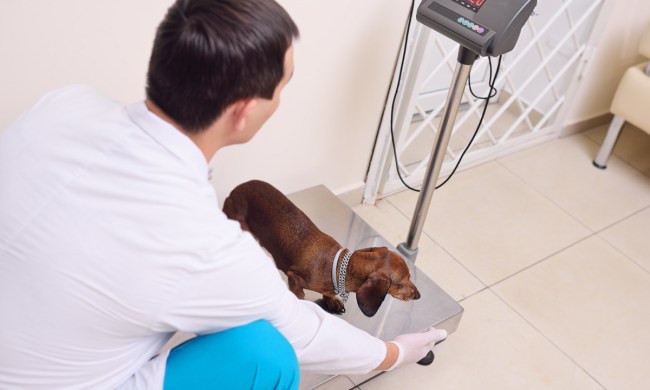
When dog owners are in the kitchen, it’s only normal to have an extra pair of eyes watching their every move. Furry friends are never far away when food is around, and it’s all too easy to toss your dog a table scrap their way when they look up with those pleading eyes. How could you say no?
Unless a dog is dealing with dietary restrictions or medical issues, the occasional bite of people food won’t hurt. Of course, it’s important to make sure that whatever you’re feeding them is safe for canine consumption, as so many dog owners go to the internet to double-check. That’s why you’re here!
If you’ve been wondering, “Can dogs eat shrimp?” — you’ve come to the right place. We’ll break down everything you need to know about feeding dogs shrimp so you can get back to cooking.
Can dogs eat shrimp?

Long story short: yes! When prepared correctly (more on that below), dogs can eat a small amount of cooked shrimp. Like with any food, there can be too much of a good thing, and it’s always best to start small — and even check in with your vet — before adding a new food to your dog’s diet.
Shellfish allergies in dogs don’t look like the scary, life-threatening anaphylactic reaction that can happen in people. With canines, food allergies typically happen after long-term exposure, but a bout of stomach upset isn’t out of the question. Whenever feeding your dog something new, be sure to watch out for any signs of canine intestinal upset.
Benefits of feeding your dog shrimp

There’s no doubt that shrimp is tasty, but did you know it could even have nutritional benefits for your dog? It’s true — shrimp is full of vitamin B3 (also known as niacin) and B12, which play important roles in the body’s most important functions. It also contains phosphorus, which is great for bone health, and it has brain-boosting antioxidants.
However, there are a few downsides to consider before feeding your dog shrimp. Even though it’s low in fat, calories, and carbs, shrimp is high in cholesterol. That’s why sticking to moderation is key, as high cholesterol in dogs can lead to a number of health concerns.
How to prepare shrimp for dogs

If you’re preparing shrimp at home and want to set a few aside for your dog, make sure the pieces are peeled, cleaned, and deveined. You can remove the tail of the shrimp before or after cooking, depending on what’s easiest for you, but make sure to remove them before feeding your pup.
Also, be sure NOT to feed your dog raw shrimp. There are a number of different bacteria in uncooked shrimp that could make your pup sick. If they do happen to get into raw shrimp, keep an eye out for symptoms of illness like vomiting and diarrhea. Be sure to contact your veterinarian if you notice these symptoms. When cooking shrimp for your dog, don’t use any oils, seasonings, or spices. Many of these ingredients can be unhealthy or harmful to canines, so stick to boiling, baking, grilling, or steaming.
With just a few precautions, you can safely include shrimp in your dog’s tool belt of treats. It’s a great ingredient to feed in moderation, whether as a dog treat or part of a meal, and odds are, your dog will find shrimp delicious, too!



